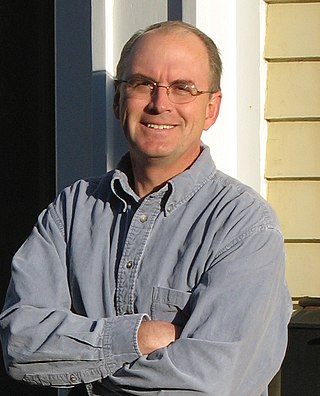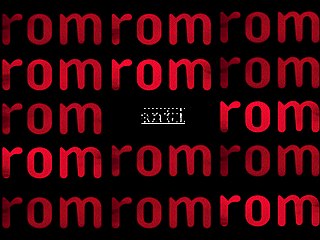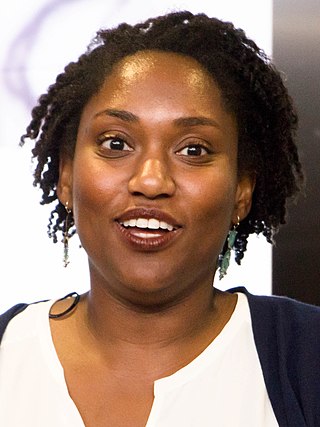
Lev Manovich is an artist, an author and a theorist of digital culture. He is a Distinguished Professor at the Graduate Center of the City University of New York. Manovich played a key role in creating four new research fields: new media studies (1991-), software studies (2001-), cultural analytics (2007-) and AI aesthetics (2018-). Manovich's current research focuses on generative media, AI culture, digital art, and media theory.

Mental Floss is an online magazine and its related American digital, print, and e-commerce media company focused on millennials. It is owned by Minute Media and based in New York City, United States. mentalfloss.com, which presents facts, puzzles, and trivia with a humorous tone, draws 20.5 million unique users a month. Its YouTube channel produces three weekly series and has 1.3 million subscribers. In October 2015, Mental Floss teamed with the National Geographic Channel for its first televised special, Brain Surgery Live with mental_floss, the first brain surgery ever broadcast live.

Robert Owen Keohane is an American academic working within the fields of international relations and international political economy. Following the publication of his influential book After Hegemony (1984), he has become widely associated with the theory of neoliberal institutionalism in international relations, as well as transnational relations and world politics in international relations in the 1970s.

The 48 Laws of Power (1998) is a self-help book by American author Robert Greene. The book is a New York Times bestseller, selling over 1.2 million copies in the United States.

Nathaniel Philbrick is an American author of history, winner of the National Book Award, and a finalist for the Pulitzer Prize. His maritime history, In the Heart of the Sea: The Tragedy of the Whaleship Essex, is based on what inspired Herman Melville to author Moby-Dick, won the 2000 National Book Award for Nonfiction and was adapted as a film in 2015.

The Antirom art collective was formed in 1994 as a "protest against ill-conceived point-and-click 3D interfaces grafted onto re-purposed old content - video, text, images, audio and so on - and repackaged as multimedia". Its initial and most notable project, the Antirom CD-ROM, was funded by Arts Council of Great Britain and focussed on exploring interactivity in its own right, rather than being an interface to existing content such as video, audio and text.

A biography, or simply bio, is a detailed description of a person's life. It involves more than just basic facts like education, work, relationships, and death; it portrays a person's experience of these life events. Unlike a profile or curriculum vitae (résumé), a biography presents a subject's life story, highlighting various aspects of their life, including intimate details of experience, and may include an analysis of the subject's personality.

An e-reader, also called an e-book reader or e-book device, is a mobile electronic device that is designed primarily for the purpose of reading digital e-books and periodicals.
The term metamedia, coined by Alan Kay and Adele Goldberg, refers to new relationships between form and content in the development of new technologies and new media.
One of the principal features defining traditional cinema is a fixed and linear narrative structure. In Database Cinema however, the story develops by selecting scenes from a given collection like a computer game in which a player performs certain acts and thereby selects scenes and creating a narrative.
Software studies is an emerging interdisciplinary research field, which studies software systems and their social and cultural effects. The implementation and use of software has been studied in recent fields such as cyberculture, Internet studies, new media studies, and digital culture, yet prior to software studies, software was rarely ever addressed as a distinct object of study. To study software as an artifact, software studies draws upon methods and theory from the digital humanities and from computational perspectives on software. Methodologically, software studies usually differs from the approaches of computer science and software engineering, which concern themselves primarily with software in information theory and in practical application; however, these fields all share an emphasis on computer literacy, particularly in the areas of programming and source code. This emphasis on analysing software sources and processes often distinguishes software studies from new media studies, which is usually restricted to discussions of interfaces and observable effects.
Cultural analytics refers to the use of computational, visualization, and big data methods for the exploration of contemporary and historical cultures. While digital humanities research has focused on text data, cultural analytics has a particular focus on massive cultural data sets of visual material – both digitized visual artifacts and contemporary visual and interactive media. Taking on the challenge of how to best explore large collections of rich cultural content, cultural analytics researchers developed new methods and intuitive visual techniques that rely on high-resolution visualization and digital image processing. These methods are used to address both the existing research questions in humanities, to explore new questions, and to develop new theoretical concepts that fit the mega-scale of digital culture in the early 21st century.
Noah Wardrip-Fruin is a professor in the Computational Media department of the University of California, Santa Cruz, and is an advisor for the Expressive Intelligence Studio. He is an alumnus of the Literary Arts MFA program and Special Graduate Study PhD program at Brown University. In addition to his research in digital media, computer games, and software studies, he served for 10 years as a member of the Board of Directors of the Electronic Literature Organization.
Forward Anywhere is a hypertext narrative created by writer Judy Malloy and scientist Cathy Marshall. They started working together in 1993 through the PAIR program at the Xerox Palo Alto Research Center. Malloy and Marshall were one of the first and only pairings of two women in the program "created to bring together scientists and artists, with the hope of initiating a dialog between the two communities, and creating what PAIR program director Rich Gold described as 'new art' and 'new research.'" The pair wrote of their experience working together in the article, "Closure Was Never a Goal in this Piece", explicating their collaboration process and the connections found between each other.
Micha Cárdenas, stylized as micha cárdenas, is an American visual and performance artist who is an assistant professor of art and design, specializing in game studies and playable media, at the University of California Santa Cruz. Cárdenas is an artist and theorist who works with the algorithms and poetics of trans people of color in digital media.
The Center for Research in Computing and the Arts (CRCA) was an interdisciplinary organized research unit of UCSD in San Diego, California. CRCA provided support for numerous projects that intersect with the fields of New Media Art, Software Studies, Game studies, Art/Science collaborations, Mixed Reality, Experimental Music, Digital Audio, Immersive Art and Networked Performance over its 40 year history. CRCA was originally founded by composer Roger Reynolds as the Center for Music Experiment (CME) in 1972, and was directed for many years by F. Richard Moore. The center was renamed and the scope widened when artist and artificial intelligence pioneer Harold Cohen became Director in 1993.

New media art includes artworks designed and produced by means of electronic media technologies. It comprises virtual art, computer graphics, computer animation, digital art, interactive art, sound art, Internet art, video games, robotics, 3D printing, immersive installation and cyborg art. The term defines itself by the thereby created artwork, which differentiates itself from that deriving from conventional visual arts such as architecture, painting or sculpture.
New media studies is an academic discipline that explores the intersections of computing, science, the humanities, and the visual and performing arts. Janet Murray, a prominent researcher in the discipline, describes this intersection as "a single new medium of representation, the digital medium, formed by the braided interplay of technical invention and cultural expression at the end of the 20th century". The main factor in defining new media is the role the Internet plays; new media is effortlessly spread instantly. The category of new media is occupied by devices connected to the Internet, an example being a smartphone or tablet. Television and cinemas are commonly thought of as new media but are ruled out since the invention was before the time of the internet.
Patricia Zavella is an anthropologist and professor at the University of California, Santa Cruz in the Latin American and Latino Studies department. She has spent a career advancing Latina and Chicana feminism through her scholarship, teaching, and activism. She was president of the Association of Latina and Latino Anthropologists and has served on the executive board of the American Anthropological Association. In 2016, Zavella received the American Anthropological Association's award from the Committee on Gender Equity in Anthropology to recognize her career studying gender discrimination. The awards committee said Zavella’s career accomplishments advancing the status of women, and especially Latina and Chicana women have been exceptional. She has made critical contributions to understanding how gender, race, nation, and class intersect in specific contexts through her scholarship, teaching, advocacy, and mentorship. Zavella’s research focuses on migration, gender and health in Latina/o communities, Latino families in transition, feminist studies, and ethnographic research methods. She has worked on many collaborative projects, including an ongoing partnership with Xóchitl Castañeda where she wrote four articles some were in English and others in Spanish. The Society for the Anthropology of North America awarded Zavella the Distinguished Career Achievement in the Critical Study of North America Award in the year 2010. She has published many books including, most recently, "I'm Neither Here Nor There, Mexicans"Quotidian Struggles with Migration and Poverty, which focuses on working class Mexican Americans struggle for agency and identity in Santa Cruz County.

Marcia Chatelain is an American academic who serves as the Penn Presidential Compact Professor of Africana Studies at the University of Pennsylvania. In 2021, she was awarded the Pulitzer Prize for History for her book Franchise: The Golden Arches in Black America, for which she also won the James Beard Award for Writing in 2022. Chatelain was the first black woman to win the latter award.










